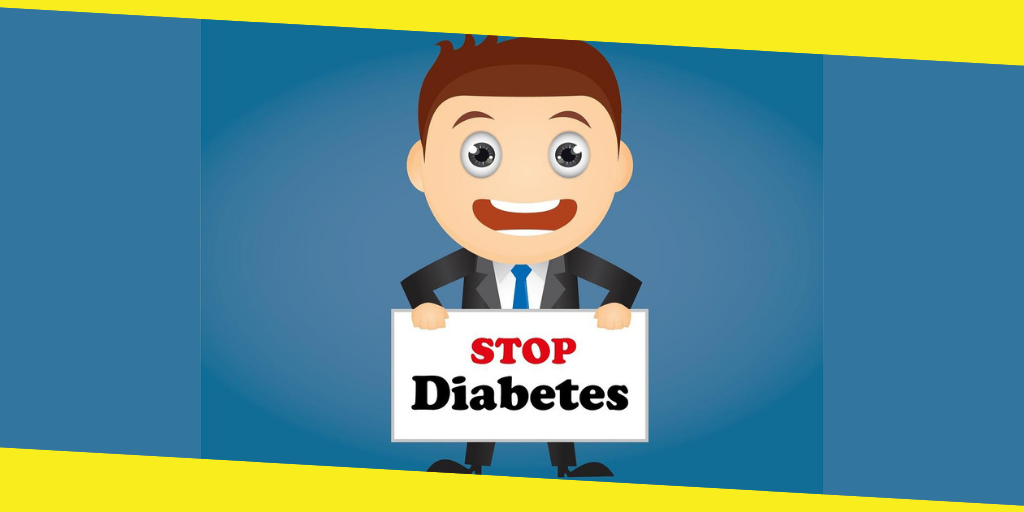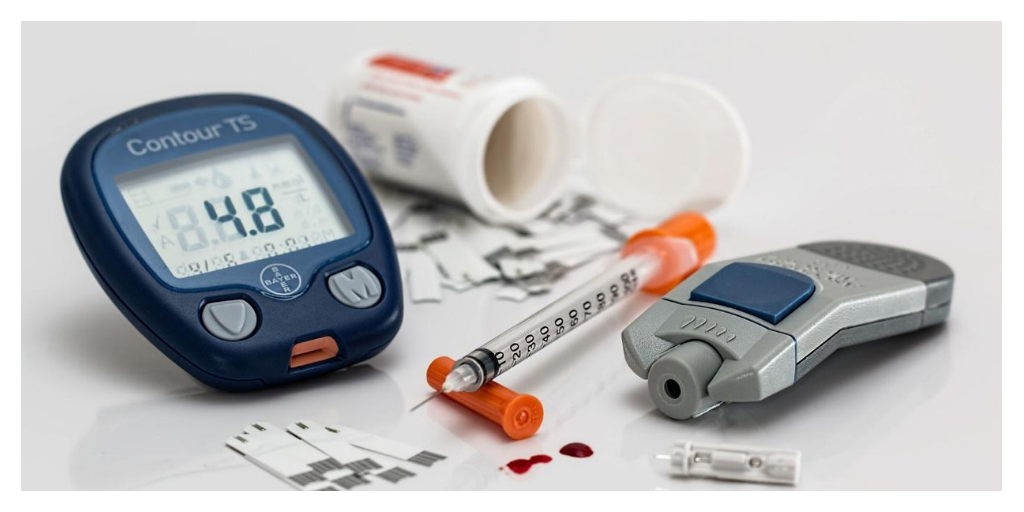Type 1, Type 2 Diabetes: New and More Effective Treatment Strategies

Confronted with the limitations of insulin as part of a “holistic” approach to type 1 diabetes and its risk factors, diabetologists are turning to other molecules to take in combination with insulin: that’s “adjuvant treatment” of type 1 diabetes.
If type 1 diabetes is insulin deficiency diabetes by definition, insulin delivery does not necessarily solve all the problems, especially in the long term, when the diabetic becomes an adult.
Over the years, it is sometimes difficult to achieve glycemic targets and the intensification of treatment is accompanied by an increased risk of episodes of hypoglycaemia and weight gain. There is greater glycemic variability and, in the end, this phenomenon is responsible for increased cardiovascular risk.
Adjuvant therapy with insulin
The idea has therefore come to diabetes doctors to associate insulin with other molecules, much as is already done in the treatment of type 2 diabetes.
For this “adjuvant treatment” of type 2 diabetes, the drug candidate had to have a different mechanism and independent of that of insulin, with an action if possible complementary or synergistic with insulin, to obtain a reduction of its doses, while having a good tolerance and a good safety of use. The search for an associated benefit on other cardiovascular risk factors (weight, blood pressure, lipids, etc.) was also part of the “specifications”.
Interest of glifozines
Different classes of antidiabetic agents have been studied and if GLP1 analogues and amylin analogues (pramlintide) have been studied because of their effect on the postprandial absorption of sugars, the focus is currently on SGLT2 antagonists or SGLT1 / SGLT2 double antagonists.
For SGLT2 antagonists, 2 studies were presented at the last congress of the American Diabetes Association in Orlando. Taken together, these studies validate the value of adding an SGLT2 antagonist (dapaglifozin or empaglifozin) to insulin in type 1 diabetes: patients gain 0.4% less HbA1c at 24 weeks, the daily insulin dose is reduced by about 11% and weight loss reaches 3.7% of body weight, blood pressure drops by at least 3 mm Hg. These benefits are obtained at the cost of a 3-fold increase in the risk of ketoacidosis (very low risks) and genital infections, but without an increase in the risk of hypoglycaemia.
Double antagonism SGLT1 / SGLT2
For SGLT1 / SGLT2 double antagonists, a study was presented with sotaglifozine. The advantage of this double inhibition is that in case of renal insufficiency, the excretion of sugar is reduced in the kidney (SGLT2), but the absorption of sugar continues to be reduced in the intestine (SGLT1), preserving thus a pharmacological activity which is wide, not only on the glycemia, but also on the other parameters of the cardiovascular risk (blood pressure, weight, …).
In the end, more than 32% of patients with an HbA1c lower than 7% without hypoglycemia or ketoacidosis were observed at 52 weeks.
Moreover, another study of ADA 2018 has shown that in case of renal insufficiency, even if the excretion of sugar is reduced in the kidney with the SGLT2 antagonists, the effect of these molecules is preserved on blood pressure (excretion of salt), weight and excretion of albumin by the kidney.
Adjuvant treatment of type 1 diabetes with glifozin therefore appears to be a serious avenue for improving the treatment of type 1 diabetes with high glycemic variability. On the other hand, their complementary mechanism of action on other cardiovascular risk factors makes it possible to envisage a drastic reduction of this risk. Ketoacidosis is rare but must be taken into account in the education of patients.
Type 2 diabetes
A disease characterized by two types of abnormalities: alterations in insulin secretion and abnormalities in the effects of insulin on its target tissues (insulin sensitivity). The genetic and environmental factors that affect both insulin secretion and insulin action contribute to the development and progression of type 2 diabetes.
Insulin secretion abnormalities are observed in patients with type 2 diabetes, with a gradual reduction in insulin secretion as the duration of disease progresses.
A decrease in the peripheral action of insulin (or insulin resistance) is observed in type 2 diabetics, and mainly concerns musculoskeletal and liver.
Microangiopathic complications are largely related to toxicity. High blood pressure plays an important role in the occurrence and worsening of diabetic microangiopathy.
The constitution of diabetic macroangiopathy (coronary artery disease, arteritis), would involve in addition to the vascular toxicity of glucose, arterial hypertension, complex lipid abnormalities and possibly insulin resistance. Diabetic macroangiopathy is considerably aggravated by smoking.

HOW TO TREAT?
The goals of treatment
The main information of the United Kingdom Prospective Diabetes Study (UKPDS) is the confirmation of the deleterious role of hyperglycemia and the benefit of treatment strategies to ensure glycemic control: glycemic improvement, whatever the treatment used, can greatly reduce the risk of occurrence of diabetic microangiopathy and stabilizes it once it is constituted.
These data therefore imply a very early detection and correction of abnormalities in glycoregulation, with a meticulous and early control of hyperglycemia, in order to avoid microangiopathy, self-aggravation of the insular deficiency and the evolution towards insulinorequency. The correction of vascular risk factors is the other essential component of the treatment of type 2 diabetes. Strict tension control provides significant benefits both to prevent and to stabilize microangiopathy and macroangiopathy.
Dietetics and lifestyle
The initial treatment of type 2 diabetes must first be based on diet and lifestyle changes, the full effect of which will ideally be considered in the second month (Grade A recommendation).Physical activity and food planning are essential interventions in the management of type 2 diabetes.
Drug treatment will only be decided if dietary and lifestyle measures have not achieved the stated objectives. In the case of medical treatment, the diet and lifestyle shall be continued indefinitely with the same rigor to reduce or limit the “drug load” and for their own therapeutic value (grade A recommendation).
The recovery or continuation of a regular physical activity is an integral part of the health and dietary management.
Drugs to normalize blood sugar in type 2 diabetes
Hypoglycemic sulfonamides and other insulin secretagogues
Hypoglycemic sulfonamides are able to normalize or reduce hyperglycemia in type 2 diabetics who are overweight. Leglibenclamide, chlorpropamide and glipizide have been shown to be able to reduce ocular and renal micro-angiopathic complications in the long term in unweighted and overweight subjects (BMI <28 kg / m2) (UKPDS study). They do not have an adverse effect on macroangiopathy.-
In the case of an ineffective sulfonylurea at maximum dose, there is no benefit in trying another sulfonamide. The hypoglycaemic power of new insulin secretagogues appears to be identical to that of sulfonylureas.
Disadvantages :
Hypoglycemia is the most serious side effect associated with the use of hypoglycemic sulfonamides and affects approximately 20% of patients treated with hypoglycemic sulfonamides.
Elderly patients and patients with renal insufficiency are most at risk for hypoglycemic events.
Other risk factors for the occurrence of identified hypoglycemic events are: alcoholic beverage intake, meal suppression, unusual physical exercise, use of potentiating drugs, moderate hyperglycemia before treatment, failure to comply with gradual increase in doses of sulfonamides hypoglycemic, malnutrition, liver disease.
Hypoglycaemic episodes occur more frequently with long-acting sulfonamides and when using long-term delayed release drug formulations (Pharmacovigilance, Agence du Médicament).
Hypoglycaemic hypoglycaemia hypoglycemics are often more serious and more prolonged than those observed under insulin.
The prevention of episodes of iatrogenic hypoglycemia is a therapeutic goal of type 2 diabetes treated with sulphonylurea and other insulin secretagogues. This prevention is based on the education of patients, the use of the effective minimum dose, the careful and progressive increase of doses, the taking into account of drug interactions and food modifications. Great caution is advised when using sulfonamides and other insulin secretagogues in the elderly and the renally impaired.
MEDICINAL TREATMENT OF COMPLICATIONS OF TYPE 2 DIABETES
Retinopathy
The prevention of retinopathy in type 2 diabetes is based on:The occurrence of retinopathy in type 2 diabetes appears to be associated with poor glycemic control and the presence of high blood pressure.
- A strict glycemic balance.
- Strict tension control. (Grade A recommendations)
In cases of established retinopathy, the very gradual obtaining of a good glycemic control (in order to avoid a cystoid macular edema with a decrease in visual irreversible acuity) and a strict tension control are necessary in order to stabilize the evolution of the retinopathy, in parallel to the establishment of a specific ophthalmological treatment (grade A recommendation). Co-ordination between the general practitioner, diabetologist and ophthalmologist is recommended (Professional Agreement).
There is no proven effectiveness of “vascular protectors” in the prevention and treatment of diabetic retinopathy.
Platelet anti-aggregants do not exert a deleterious effect on diabetic retinopathy.
Bio:
Sundar working in mippin.com, as a manager. He is a writer for more than a year. Also working as freelancer content writer for Health care institute. He tells “Reduce weight and control your diet by regular exercises, wear best trimmer belts. He helps his clients to grow their business by advising them, how to advertise and market.
Email – [email protected]
Recommended For You
How Does Mahamasha Thailam Help in Treating Muscular Dystrophy?
Most Inside
Most Inside offers high-quality recommendations and valuable updates to enhance all aspects of your life, providing premium guidance and enriching experiences.




